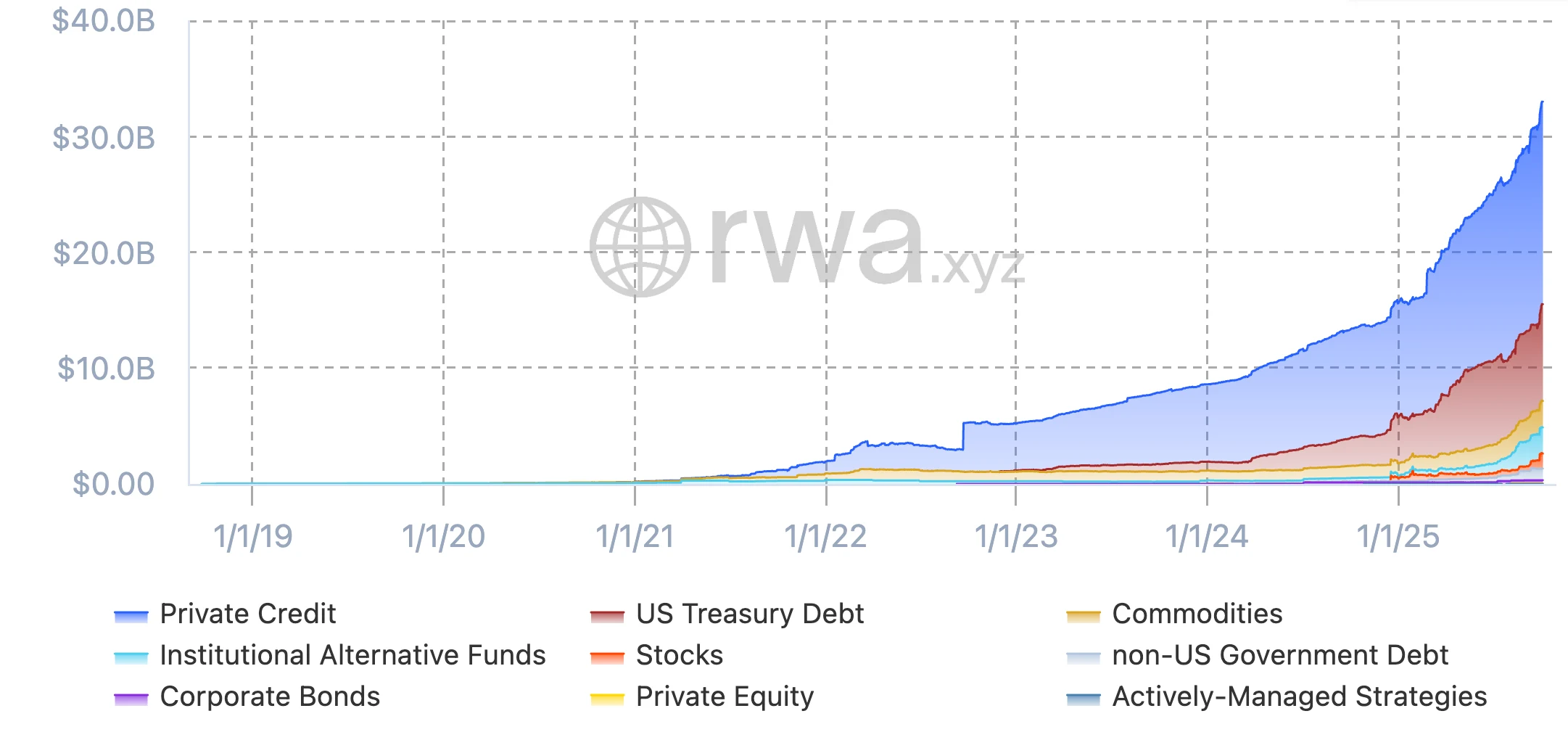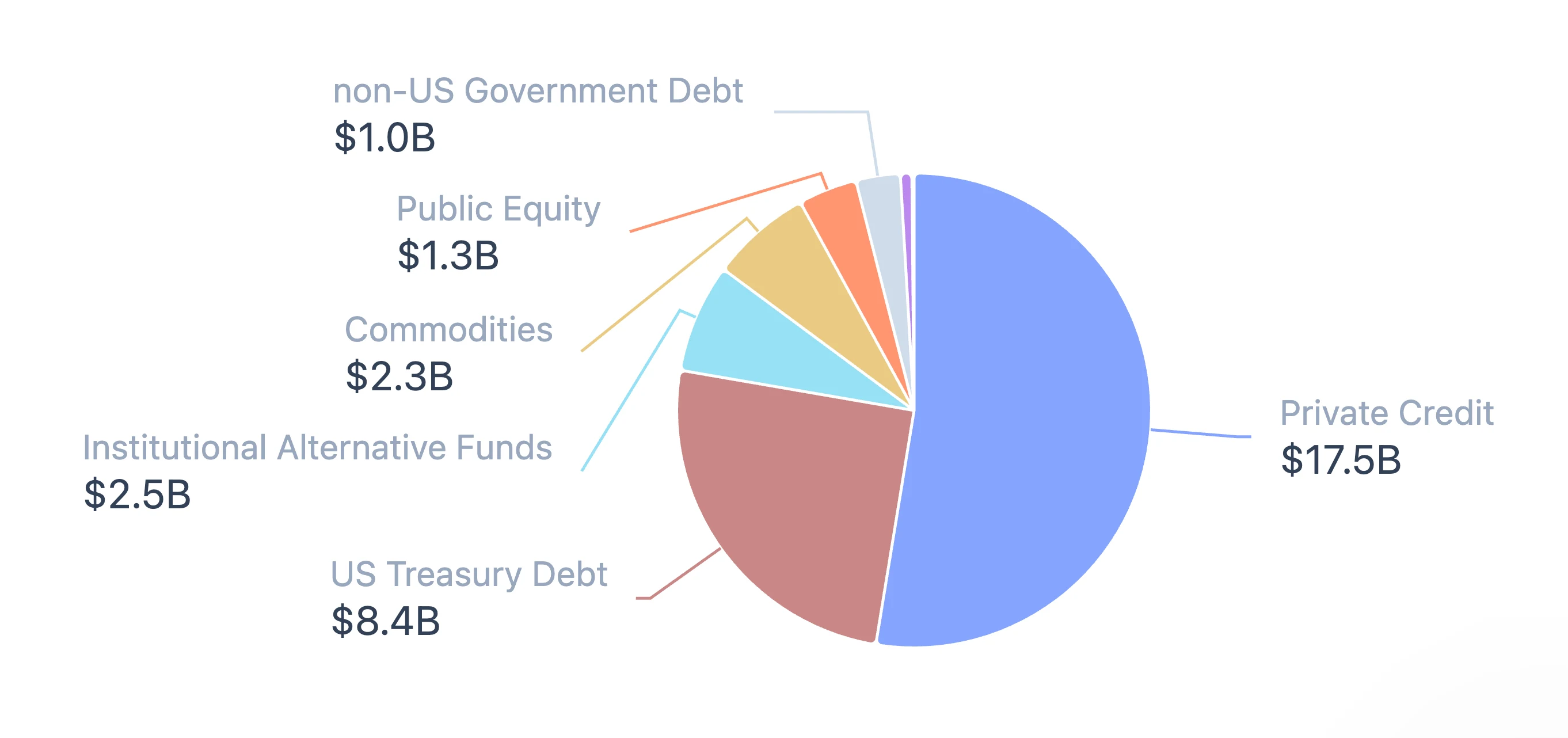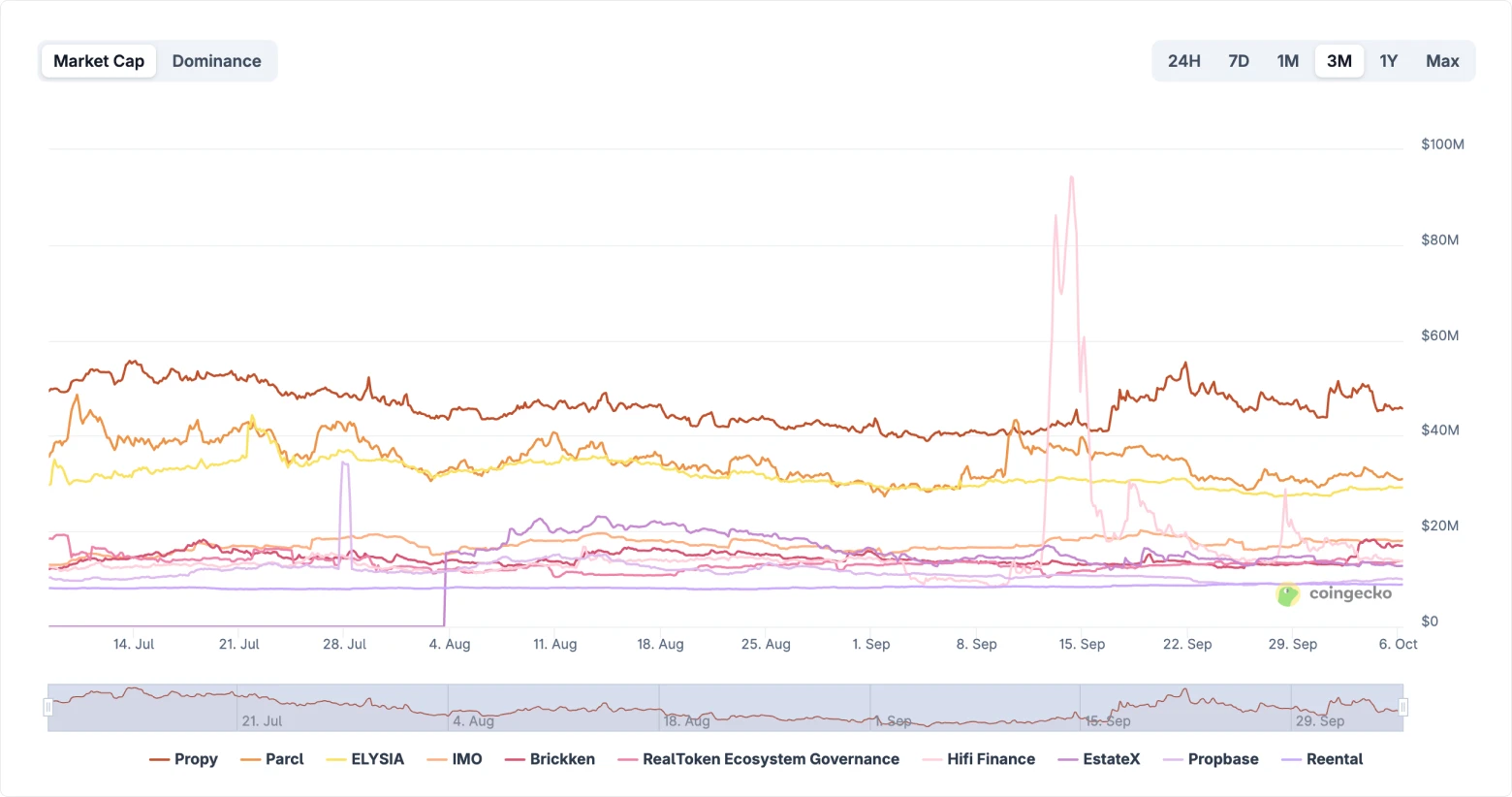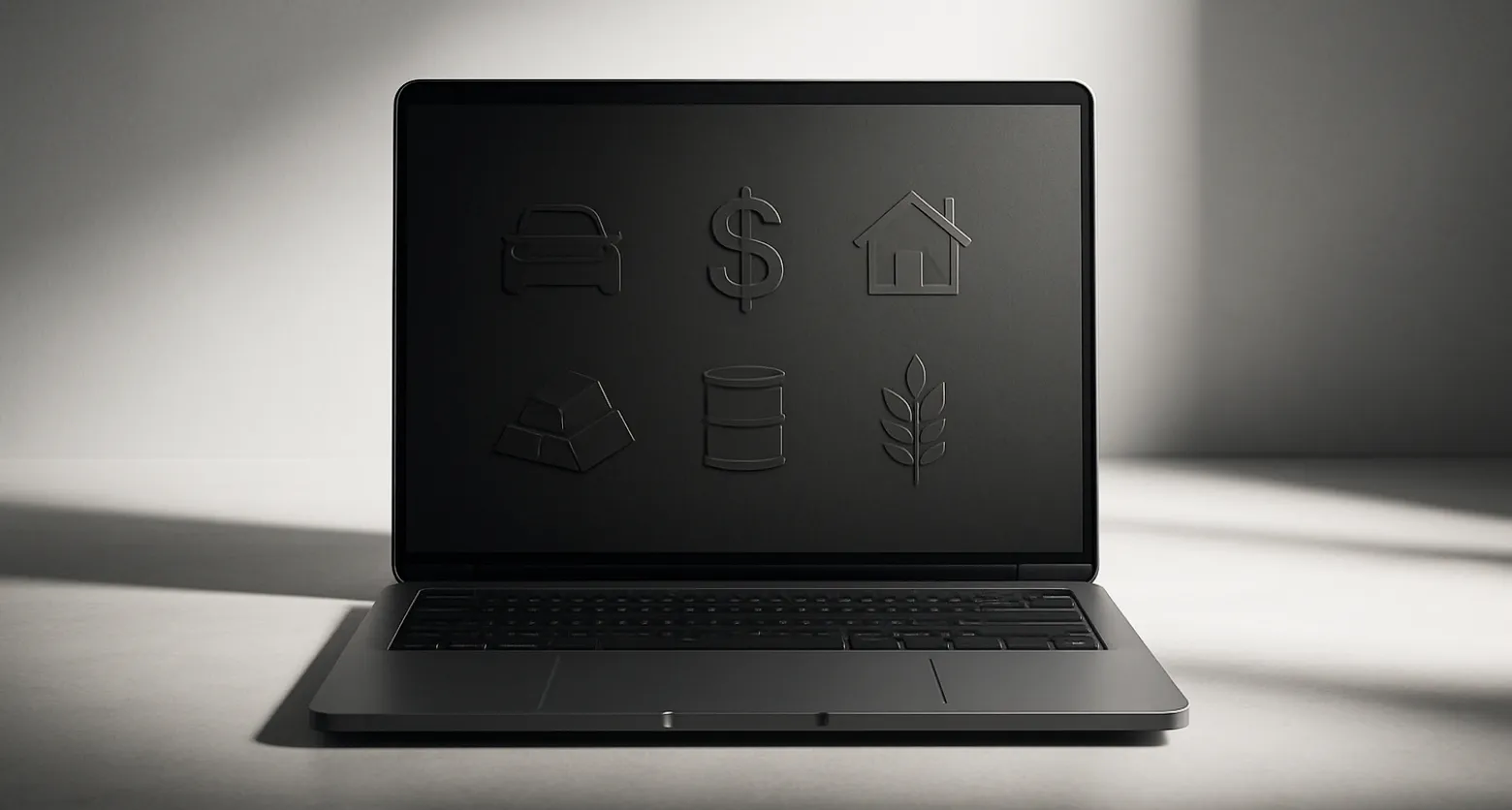

Real-world asset tokenization use cases in 2025 | AI generated image by XBTO
Real-world asset tokenization use cases in 2025 | AI generated image by XBTO
For asset managers, family offices, and institutional investors, the opportunity is clear: tokenization is not just about digital convenience, it is about rethinking access to capital, broadening investor bases, and creating new portfolio strategies.
In this article, we’ll explore the leading tokenization use cases shaping markets in 2025, from tokenized treasuries to real estate, private credit, carbon credits, and beyond.
Tokenized U.S. treasuries: The bedrock of RWA growth
While the universe of tokenized assets is expanding rapidly, the current market is dominated by government securities. As of October 2025, the total value of tokenized real-world assets (RWAs) has reached approximately $33 billion, with a significant portion of tokenized government debt and stablecoins. This highlights the foundational role that assets like U.S. Treasuries play in the tokenization ecosystem.
But why are tokenized treasuries leading the charge? The answer lies in their inherent stability and the clear efficiency gains for institutions. Traditional financial systems, with their reliance on intermediaries and T+2 settlement cycles, are riddled with inefficiencies that tie up capital and create unnecessary risks. Tokenization addresses these issues head-on.
For institutional investors, the benefits are compelling:
- Real-time settlement: Tokenized assets settle in near real-time, drastically reducing counterparty risk and freeing up capital that would otherwise be locked in settlement processes.
- Enhanced Transparency: Blockchain’s immutable ledger provides a verifiable and tamper-proof record of ownership and transaction history, which enhances trust and simplifies compliance for both investors and regulators.
- Lower costs: By automating processes like interest payments and compliance checks through smart contracts, tokenization reduces the need for intermediaries, thereby lowering administrative overhead and transaction fees.
- Global accessibility: Tokenized treasuries can be traded on global, borderless networks, allowing investors to access markets without the complexities and costs of traditional cross-border financial systems.
A prime example is BlackRock's USD Institutional Digital Liquidity Fund (BUIDL), which entered the tokenization space in 2024. Within months, the fund attracted over $500 million, signaling strong institutional demand for tokenized financial products and demonstrating how traditional finance players can leverage this technology for greater efficiency.
Real estate tokenization: Unlocking the world's largest asset class
Real estate has long been one of the most desirable yet illiquid asset classes. High capital requirements, lengthy transaction times, and geographic barriers have traditionally limited participation to a select few. Tokenized real estate is fundamentally changing this dynamic by enabling fractional ownership and global access.
Fractional ownership allows a high-value property - such as a luxury apartment or a commercial building - to be divided into thousands of digital tokens. Each token represents a fractional share of the property, allowing investors to buy and sell these shares with minimal capital and unprecedented ease. This process transforms an illiquid asset into a collection of liquid, tradable units, allowing property owners to raise capital without selling the entire asset. A case study in New York involved tokenizing a luxury hotel, allowing investors to purchase fractional ownership for as little as $1,000, thereby creating liquidity in an otherwise illiquid asset class.
While this innovation is global, the United Arab Emirates (UAE) has emerged as a key hub for tokenized real estate, though the provided sources do not contain specific details on its regulatory bodies (VARA, ADGM, DIFC). The global trend, however, is clear: regulators are increasingly recognizing the transformative potential of tokenized assets and are working to create frameworks that support innovation in sectors like real estate.
For investors, the benefits include:
- Rental income automation: Smart contracts can be programmed to automatically distribute rental income to token holders on a regular schedule, ensuring transparency and efficiency.
- Global market access: Investors can participate in real estate markets around the world without geographic restrictions, broadening opportunities for both buyers and property owners.
- Portfolio diversification: Tokenization allows investors to diversify their portfolios by gaining exposure to multiple properties across different markets with smaller capital outlays.
Private credit & debt instruments: A new frontier for capital formation
The market for private credit and other debt instruments is ripe for disruption through tokenization. Raising capital through traditional debt instruments is often a slow, expensive process involving multiple intermediaries and high fees. Tokenization simplifies this by allowing companies to issue tokenized debt directly to investors on a blockchain.
This is one of the most promising tokenization use cases for institutions seeking yield and efficiency. Tokenized private credit enables businesses to access a global investor base, bypassing traditional intermediaries and reducing costs. A company in Brazil, for example, could raise funds from investors in Europe or Asia without the geographic and regulatory hurdles of traditional markets.
Institutional demand is driven by several key factors:
- Streamlined issuance: Companies can issue bonds as digital tokens, with smart contracts automating interest payments and ensuring compliance, which simplifies the entire process. A notable example is Santander’s $20 million bond issued on the blockchain, which reduced the issuance process to just days.
- Access to new markets: Tokenization facilitates the creation of microloans, allowing investors to participate in small-scale lending opportunities while reducing entry barriers.
- Enhanced liquidity: While traditionally illiquid, tokenized private credit and other debt instruments can be traded on secondary markets, providing investors with flexible exit options.
Hamilton Lane, a global private markets investment firm, pioneered this space by using blockchain to tokenize middle-market corporate loans. This initiative allowed investors to purchase tokens representing fractional ownership of the loans, gaining exposure to private credit while benefiting from enhanced transparency and liquidity.
Commodities & carbon credits: Enhancing transparency and ESG appeal
Tokenization also simplifies the ownership of commodities like gold, precious metals, and energy credits. For assets like tokenized gold, each token represents a specific quantity of the physical commodity, which is held securely by a custodian. This allows investors to trade the asset without the burden of physical storage and with the assurance of its backing.
Beyond precious metals, tokenization is playing a pivotal role in advancing sustainability and environmental, social, and governance (ESG) initiatives. Tokenized carbon credits and renewable energy credits can be created to represent a transparent and efficient marketplace for environmental assets. This supports sustainability initiatives by providing a clear mechanism for businesses to offset their emissions.
For institutions focused on ESG and compliance, tokenization offers:
- Verifiable ownership: Blockchain provides a transparent and immutable record of an asset's origin and ownership history, which is particularly valuable for assets like ethically sourced diamonds, as demonstrated by Everledger's use of the technology.
- Direct investment in sustainability: Tokenization allows businesses and individuals to invest directly in renewable energy initiatives, such as solar farms or wind turbines, fostering greener and more inclusive participation.
- Alignment with ESG goals: The transparent trading of tokenized renewable energy credits connects investors to projects that drive positive social and environmental change, creating a direct link between capital and impactful outcomes.
Tokenized funds & structured products: Democratizing access to dversified portfolios
Another powerful set of RWA tokenization use cases involves tokenizing investment funds and structured products. A fund manager with a private equity portfolio, for instance, can tokenize the fund to overcome high entry barriers. By dividing ownership into thousands of tokens, the fund can be offered to a wider range of investors at a much lower minimum investment.
This process democratizes access to investment opportunities that were once the exclusive domain of institutional or ultra-wealthy investors. A teacher in Tokyo could invest in a renewable energy project in South Africa, or a young professional in Brazil could own a share of a U.S. private equity fund. This is more than just a technological improvement; it fosters a more inclusive and efficient financial ecosystem.
Tokenization examples in this category show a clear path toward portfolio diversification:
- Hamilton Lane's tokenized fund: By reducing the minimum investment for one of its private equity funds from $5 million to just $20,000, Hamilton Lane opened access to a previously excluded investor base, fostering inclusivity and diversification.
- Private equity tokenization: A fund with a $50 million portfolio can be tokenized, with shares sold to retail investors for as little as $1,000. Smart contracts can automate dividend distributions, while digital exchanges provide liquidity for investors.
Fractionalization not only democratizes access but also allows investors to build more diversified portfolios across multiple asset classes. This helps in optimizing asset allocation and improving risk management.
Emerging niches: The next wave of tokenization use cases
While assets like treasuries and real estate are leading adoption, tokenization is also making inroads into more niche markets, including fine art, collectibles, and intellectual property. High-value collectibles have traditionally been available only to a small circle of wealthy individuals. Tokenization democratizes access to these exclusive markets.
Early-stage tokenization examples in these areas include:
- Fine art: Iconic works by artists like Picasso can be tokenized, with each token representing fractional ownership. This allows art enthusiasts and investors to own a fraction of a masterpiece for as little as $100, creating liquidity in a market that was previously absent.
- Collectibles: Rare items like classic cars, vintage wine, or sneakers can be tokenized, allowing enthusiasts to share ownership while bypassing the high costs of full ownership.
- Intellectual property and royalties: Artists can tokenize future earnings from music and film royalties, allowing fans to invest in their success. Similarly, inventors can tokenize patents and copyrights to fund research and development.
Although these markets are still nascent, they highlight the transformative potential of this technology to unlock value in virtually any asset class.
Why institutions are embracing tokenization
As we look toward 2025, it is clear that tokenization is not a fleeting trend but a fundamental reshaping of finance and ownership. The tokenization use cases explored here - from tokenized treasuries and real estate to private credit and carbon credits - demonstrate a powerful convergence of technological maturity, regulatory progress, and growing investor demand.
For institutional investors, the benefits are too significant to ignore. Tokenization unlocks liquidity in traditionally illiquid assets, streamlines complex processes through automation, enhances transparency, and democratizes access to a wider range of investment opportunities. While challenges like regulatory ambiguity and market fragmentation remain, the momentum is undeniable. The question is no longer if tokenization will revolutionize finance, but how quickly it will reshape the way we think about assets and ownership.
The full breakdown
In our first article, "Navigating Crypto Volatility: The Advantages of Active Management," we explored how the high volatility and low correlation of digital assets with traditional asset classes create unique opportunities for active managers. We discussed how these characteristics enable active managers to execute tactical trading strategies, capitalizing on short-term price movements and market inefficiencies. Building on that foundation, we now turn our attention to the unique market microstructure of digital assets.
Conducive market microstructure of digital assets
The market microstructure of digital assets - a framework that defines how crypto trades are conducted, including order execution, price formation, and market interactions - sets the stage for active management to thrive. This unique ecosystem, characterized by its continuous trading hours, diverse trading venues, and substantial market liquidity, offers several advantages for active management, providing a fertile ground for sophisticated investment strategies.
24/7/365 market access
One of the defining characteristics of digital asset markets is their continuous, round-the-clock operation.
Unlike traditional financial markets that operate within specific hours, cryptocurrency markets are open 24 hours a day, seven days a week, all year round. This continuous trading capability is particularly advantageous for active managers for several reasons:
- Immediate response to market events: Unlike traditional markets that close after regular trading hours, digital asset markets allow managers to react immediately to breaking news or events that could impact asset prices. For instance, if a significant economic policy change occurs over the weekend, managers can adjust their positions in real-time without waiting for markets to open.
- Managing volatility: Continuous trading provides more opportunities to capitalize on price movements and volatility. Active managers can take advantage of this by implementing strategies such as short-term trading or hedging to mitigate risks and lock in gains whenever market conditions change. For instance, if there’s a sudden drop in the price of Bitcoin, managers can quickly sell their holdings to minimize losses or buy in to capitalize on the lower prices.
Variety of trading venues
The proliferation and variety of trading venues is another crucial element of the digital asset market structure. The extensive landscape of over 200 centralized exchanges (CEX) and more than 500 decentralized exchanges (DEX) offers a wide array of platforms for cryptocurrency trading. This diversity is beneficial for active managers in several ways:
- Risk management and diversification: By spreading trades across various exchanges, active managers can mitigate counterparty risk associated with any single platform. Additionally, the ability to trade on both CEX and DEX platforms allows managers to diversify their strategies, incorporating different levels of decentralization, regulatory environments, and security features.
- Arbitrage opportunities: Different venues often exhibit price discrepancies, presenting arbitrage opportunities. For example, managers can buy an asset on one exchange at a lower price and sell it on another where the price is higher, thus generating risk-free profits.
- Access to diverse liquidity pools: Multiple trading venues provide access to diverse liquidity pools, ensuring that managers can execute large trades without significantly impacting the market price.
Spot and derivatives markets (Variety of instruments)
The seamless integration of spot and derivatives markets within the digital asset space presents a considerable advantage for active managers. With substantial liquidity in both markets, they can implement sophisticated trading strategies and manage risk more effectively.
For instance, as of August 8 2024, Bitcoin (BTC) boasts a daily spot trading volume of $40.44 billion and an open interest in futures of $27.75 billion. Additionally, derivatives such as futures, options, and perpetual contracts enable managers to hedge positions, leverage trades, and employ complex strategies that can amplify returns.

Overall, the benefits for active managers include:
- Hedging and risk management: Derivatives offer a powerful tool for hedging against unfavorable price movements, enabling more efficient risk management. For instance, a manager holding a substantial amount of Bitcoin in the spot market can use Bitcoin futures contracts to safeguard against potential price drops, thereby enhancing risk control.
- Access to leverage: Managers can use derivatives to leverage their positions, amplifying potential returns while maintaining control over risk exposure. For instance, by employing options, a manager can gain exposure to an underlying asset with only a fraction of the capital needed for a direct spot purchase, thereby enabling more capital-efficient investment strategies.
- Strategic flexibility: By integrating spot and derivatives markets, managers can implement sophisticated strategies designed to capitalize on diverse market conditions. For instance, they may engage in volatility selling, where options are sold to generate income from market volatility, regardless of price direction. Additionally, managers can leverage favorable funding rates in perpetual futures markets to enhance yield generation. Basis trading, another strategy, involves taking offsetting positions in spot and futures markets to profit from price differentials, enabling returns that are independent of market movements.
Exploiting market inefficiencies
Digital asset markets, being relatively nascent, are less efficient compared to traditional financial markets. These inefficiencies arise from various factors, including regulatory differences, market segmentation, and varying levels of market maturity. For example:
- Pricing anomalies: Phenomena like the "Kimchi premium," where cryptocurrency prices in South Korea trade at a premium compared to other markets, create arbitrage opportunities. Managers can exploit these by buying assets in one market and selling them in another at a higher price.
- Exploiting mispricings: Active managers can identify and capitalize on mispricings caused by market inefficiencies, using strategies such as statistical arbitrage and mean reversion.
The unique aspects of the digital asset market structure create an exceptionally conducive environment for active management. Continuous trading hours and diverse venues provide the flexibility to react quickly to market changes, ensuring timely execution of trades. The availability of both spot and derivatives markets supports a wide range of sophisticated trading strategies, from hedging to leveraging positions. Market inefficiencies and pricing anomalies offer numerous opportunities for generating alpha, making active management particularly effective in the digital asset space. Furthermore, the ability to hedge and manage risk through derivatives, along with exploiting uncorrelated performance, enhances portfolio resilience and stability.
In our next article, we'll delve into the various techniques active managers employ in the digital asset markets, showcasing real-world use cases.
Read full disclaimer

















